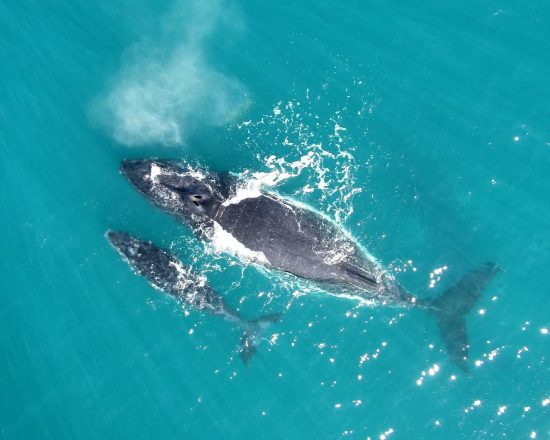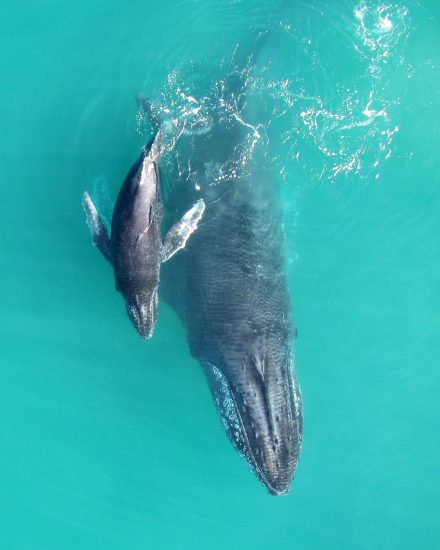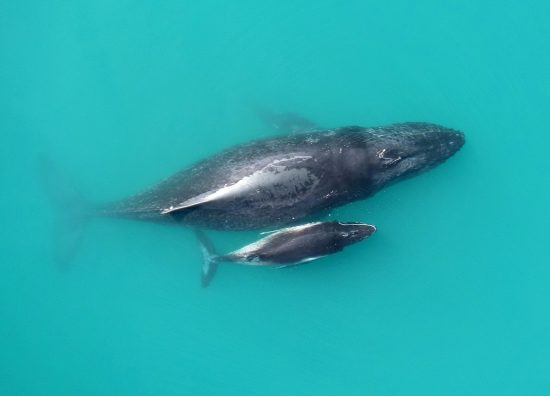




Vocalisations may be used to help mother and calf stay together
To avoid detection by killer whales,
newborn humpback whales whisper to their mothers.
Ecologists from
Denmark and Australia made this discovery after they tagged two mother
humpback whales and eight calves in Exmouth Gulf off western Australia
in a study to find out more about the first months of their lives.
During the study – which was recently published in the Functional
Ecology journal – the tags revealed newborn humpbacks communicating
with their mothers using intimate grunts and squeaks. This usually took
place while they were swimming, suggesting that such sounds helped the
mother and calf stay together in the murky waters.
“We also heard a lot of rubbing
sounds, like two balloons being rubbed together, which we think was the
calf nudging its mother when it wants to nurse,” said lead author Dr Simone Videsen of Aarhus University.
It is thought that such communication reduced the risk of being overheard by killer whales nearby. According to Dr Videsen, “Killer
whales hunt young humpback calves outside Exmouth Gulf, so by calling
softly to its mother, the calf is less likely to be heard by killer
whales, and avoid attracting male humpbacks who want to mate with the
nursing females.”
During summer, humpback whales are found in the food-rich waters of the
Antarctic or Arctic; and then they migrate to the tropics in the winter
to breed and mate. While they are in the tropics (like Exmouth Gulf),
newborn calves need to gain as much weight as they can before embarking
on their first migration.
“This migration is very demanding for
young calves. They travel 5,000 miles across open water in rough seas
and with strong winds. Knowing more about their suckling will help us
understand what could disrupt this critical behaviour, so we can target
conservation efforts more effectively,” said Dr Videsen.
The findings can help conserve this essential humpback habitat and
ensure that these nursery waters are kept as quiet as possible.
“From
our research, we have learnt that mother-calf pairs are likely to be
sensitive to increases in ship noise. Because mother and calf
communicate in whispers, shipping noise could easily mask these quiet
calls,” said Dr Videsen.
 Herbert
Herbert 27th April 2017
27th April 2017